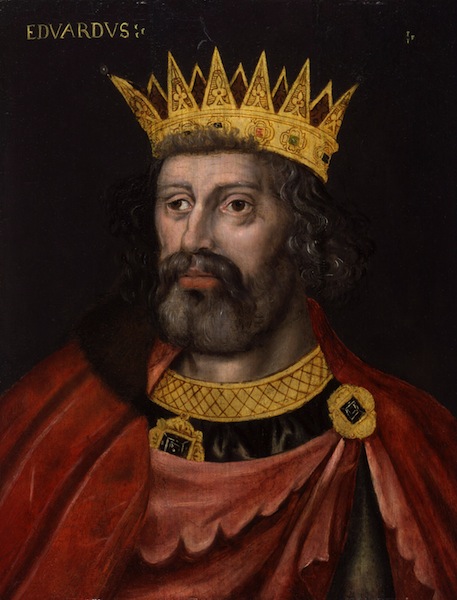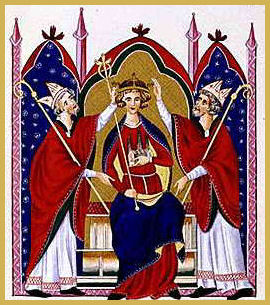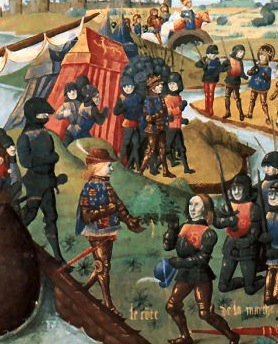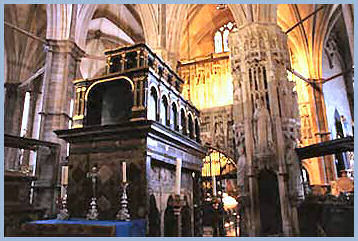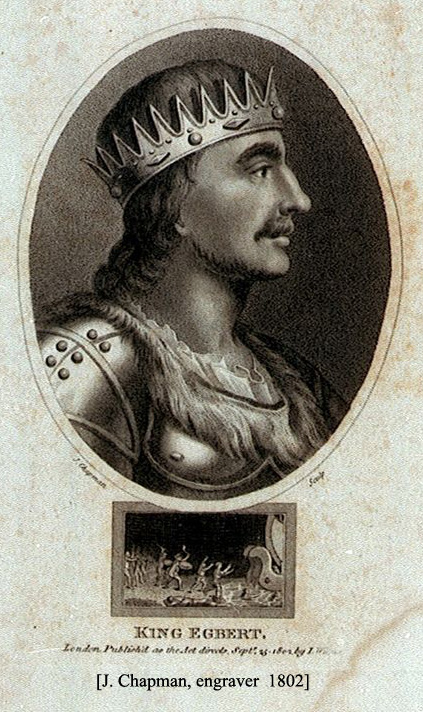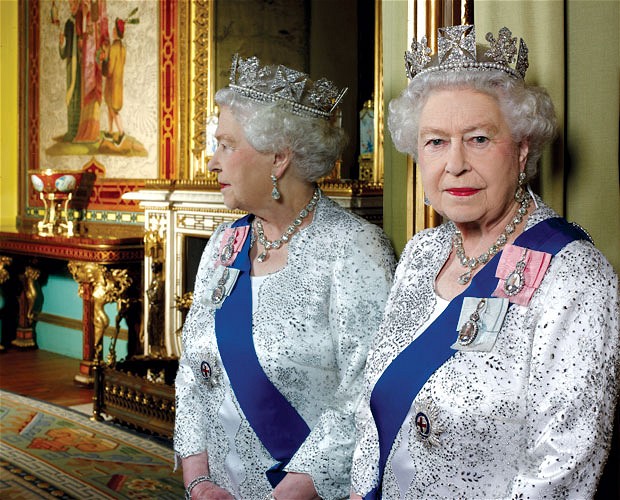Name: King Henry III
Born: October 1, 1207 at Winchester
Parents: King John and Isabella of Angouleme
Relation to Elizabeth II: 20th great-grandfather
House of: Plantagenet
Ascended to the throne: October 18, 1216 aged 9 years
Crowned: October 28, 1216 at Gloucester and May 17, 1220 at Westminster Abbey
Married: Eleanor of Provence, Daughter of Raymond Berenger
Children: Six sons including Edward I, and three daughters
Died: November 16, 1272 at Westminster, aged 65 years, 1 month, and 16 days
Buried at: Westminster Abbey
Reigned for: 56 years, and 29 days
Succeeded by: his son Edward
Henry III (1 October 1207 – 16 November 1272) was the son and successor of John as King of England, reigning for 56 years from 1216 until his death. His contemporaries knew him as Henry of Winchester. He was the first child king in England since the reign of Æthelred the Unready. England prospered during his reign and his greatest monument is Westminster, which he made the seat of his government and where he expanded the abbey as a shrine to Edward the Confessor. He is the first of only five monarchs to reign in the Kingdom of England or its successor states for 50 years or more, the others being Edward III (1327–1377), George III (1760–1820), Victoria (1837–1901) and Elizabeth II (1952–present).
He assumed the crown under the regency of the popular William Marshal, 1st Earl of Pembroke, but the England he inherited had undergone several drastic changes in the reign of his father. He spent much of his reign fighting the barons over Magna Carta and the royal rights, and was imprisoned by rebel leader Simon de Montfort, leader of the baronial cause. Under de Montfort’s leadership, and against Henry’s will, England’s first Parliament was called. His son Edward, aided by ally Roger Mortimer would eventually defeat de Montfort and reassert royal power. Henry was also unsuccessful on the Continent, where he endeavoured to re-establish English control over Normandy, Anjou, and Aquitaine.
King of England from 1216, when he succeeded John, but the royal powers were exercised by a regency until 1232, and by two French nobles, Peter des Roches and Peter des Rivaux, until the barons forced their expulsion in 1234, marking the start of Henry’s personal rule. His financial commitments to the papacy and his foreign favourites antagonized the barons who issued the Provisions of Oxford in 1258, limiting the king’s power. Henry’s refusal to accept the provisions led to the second Barons’ War in 1264, a revolt of nobles led by his brother-in-law Simon de Montfort. Henry was defeated at Lewes, Sussex, and imprisoned, but restored to the throne after the royalist victory at Evesham in 1265. He was succeeded by his son Edward I.
On his release Henry was weak and senile and his eldest son, Edward, took charge of the government.
| Timeline for King Henry III |
| 1216 | Henry III is crowned King at the age of nine. England is ruled temporarily by two regents, Hubert de Burgh and William the Marshal |
| 1217 | The French lose the battles of Lincoln and Dover and are driven back to France |
| 1220 | Building of Salisbury cathedral begun |
| 1222 | De Burgh successfully puts down an insurrection supporting the French king Louis Vlll’s claim to the throne |
| 1227 | Henry takes full control of the government of England, but retains de Burgh as his main adviser |
| 1232 | Hubert de Burgh is dismissed as adviser |
| 1236 | Henry marries Eleanor of Provence |
| 1237 | The Treaty of York with Alexander II of Scotland agrees the border between England and Scotland |
| 1238 | Simon de Montfort marries Henry’s sister, Eleanor |
| 1240 | Henry’s Great Council is called ‘Parliament’ for the first time |
| 1245 | Henry lays the foundation stone for the rebuilding of Westminster Abbey |
| 1258 | The English barons, led by de Montfort, rebel against Henry’s misgovernment. They present a list of grievances to Henry, who signs the Provisions of Oxford, which limit royal power |
| 1261 | Henry repudiates the Provisions of Oxford |
| 1264 | The Baron’s War breaks out. De Montfort defeats Henry at Lewes. Henry is captured. |
| 1265 | Simon de Montfort summons the first directly elected English Parliament |
| 1265 | Some of the barons break their alliance with de Montfort and, led by Prince Edward, kill him at the Battle of Evesham |
| 1266 | The Dictum of Kenilworth restores Henry’s authority and annuls the Provisions of Oxford |
| 1267 | In the Treaty of Montgomery, Henry recognizes Llewellyn ap Gruffydd as ruler of Wales |
| 1272 | Henry III dies in the Palace of Westminster |
The Minority of Henry III
Henry III, the eldest son of King John and Isabella of Angouleme, was born on 1st October, 1207 at Winchester. A grandson of Henry II and Eleanor of Aquitaine, he was also the great-great-grandson of Louis VI of France.
He succeeded his unpopular father at the age of nine, to a kingdom in a state of anarchy. Henry was described as being a “pretty little knight” when crowned at the Abbey Church of Gloucester with a circlet belonging to his mother since hs father had previously lost the royal treasure in the Wash.
The highly capable William Marshall, Earl of Pembroke, was appointed Regent along with Hubert de Burgh. At the time of King John’s death, London and most of the channel ports were held by the French. In a popular move, Marshall announced his intention to rule by the terms of Magna Carta, the French invaders were driven out and peace restored in England. The great William Marshall, having served four generations of the Plantagenets with great ability, died in May, 1219, leaving de Burgh as sole Regent.
King Henry III could not have been less like his father in character, nor was he built in the usual Plantagenet mould. Cultivated, aesthetic, petulant and kind natured but weak and ineffectual, Henry reached his majority at the age of nineteen in 1227 and took over the reins of government of his kingdom but retained de Burgh as his chief adviser.
Henry’s character and appearance
A contemporary has stated of Henry III that “His mind seemed not to stand on a firm basis, for every sudden accident put him into passion”. He was of middle stature and like his father, inclined to be plump. He had a drooping left eyelid, which was inherited by his oldest son Edward I, the eyelid covered half of the eye which rendered him a rather sinister appearance.
Personal Rule
Early in his reign Henry wished to regain the Duchy of Normandy, which had been lost to the French by his father, King John. In 1226, he promised to marry Yolande of Brittany. An alliance with her father Peter I, Duke of Brittany would allow Brittany to be used as a base from which Henry could launch attacks on Normandy. Henry’s cousin, Blanche, Queen of France, recognized this threat, and manouvered Peter of Brittany to promise Yolande in marriage to one of her own sons instead. Henry then pledged himself to Joan of Ponthieu, but since this also posed a threat to Normandy, the French again intervened and prevented the marriage.
In 1236, Henry married Eleanor of Provence, whose sister Margaret had already married Louis IX of France.Henry launched an unsuccessful expedition into Gascony in 1230, a belated attempt to regain the Plantagenet ancestral lands in France. In 1236 he married Eleanor of Provence. Eleanor was the second daughter of Raymond Berenger, Count of Provence (1198-1245) and Beatrice of Savoy (1206-66). Beatrice herself was the daughter of Tomasso, Count of Savoy and Margaret of Geneva. Eleanor’s elder sister, Margaret, was married to the King of France. No physical description of Eleanor survives, but since her son Edward I was over six feet tall and her husband was not, it can safely be assumed that she was quite tall for a woman. Unlike her husband, Eleanor was a strong willed character. Legend records that his attention had been drawn to her by a poem she addressed to his brother, Richard, Earl of Cornwall.
A further disastrous military campaign to expel Louis IX from Poitou was embarked upon in 1254. Disaffection at Henry’s rule was by this time rife amongst the nobles. Henry foolishly showered honours on his Queen’s foreign family, which increased their grievances. Eleanor’s maternal uncle, Peter of Savoy, was granted the honour of Richmond and his brother, Boniface, was made Archbishop of Canterbury.
The situation was further inflamed by Henry’s patronage of his French relatives, the Lusignans. They were his half-brothers by his mother’s second marriage to Hugh de Lusignan. They too were given Earldoms and church posts in England. Henry made his half bother, William de Valence, Earl of Pembroke in 1247, while another half brother, Aymer, became bishop-elect of Winchester.
Henry and Simon de Montfort
These foolish policies coupled with Henry’s pathological irresolution in government produced political revolution. By the Provisions of Oxford (1258), a council of fifteen nobles to help govern the country was imposed on the King. Chief among these was Henry’s brother-in-law, the French born Simon de Montfort, Earl of Leicester, the husband of his sister, Eleanor.
The resentful Henry asserted himself and recovered power in 1261. Queen Eleanor herself was highly unpopular and was paricularly loathed by the Londoners. In July 1263, she was pelted her with rotten eggs and vegetables whilst sailing down the Thames in her barge. The Queen was rescued by Thomas FitzThomas, the mayor of London, and was given refuge at the home of the Bishop of London. Her son Edward was never to forget this insult to his mother and thereafter reciprocated by detesting the Londoners.
The King suffered defeat at the hands of de Montfort at the Battle of Lewes on 14th May, 1264, de Montfort appropriated control of the government and a subsequent first representitive parliament was called in 1265. He selected a council of nine and ruled in the name of the king. De Montfort realised the need to obtain the support of the middle classes, in 1264, he summoned knights from each shire in addition to the normal high churchmen and nobility to an early pre-Parliament and in 1265 invited burgesses from selected towns. Henry and his eldest son, Edward, along with his brother, Richard, Earl of Cornwall, were placed under house arrest. Edward, of a much more able character than his father, escaped from his forced confinement and took up arms in Henry’s cause.
Edward defeated de Montfort at the Battle of Evesham in 1265. Henry was thrown to the ground and would have been killed had he not lifted his visor and exclaimed to his assailant “Save me, save me, I am Henry of Winchester!” De Montfort, the founder of Parliament, was killed in battle. His body was cut into pieces and his head impaled upon London Bridge. Such of his remains which could be found were buried beneath the altar of Evesham Abbey. Edward, although disliking de Montfort, adopted some of his ideas.
The Final Years
Henry revered and venerated the Saxon King St. Edward the Confessor, who had been canonised in 1161, even having a mural painted of him in his bedchamber. He possessed a mania for building and his life’s work was the re-building of Westminster Abbey, first built by King Edward.
In 1269, the new Abbey was consecrated, and Edward the Confessor’s body reburied there in a rich and imposing shrine. Henry III himself helped carry the Confessor’s coffin to its new resting place.
Three years later Henry III himself died at his Palace of Westminster on 16 November, 1272 aged sixty- five and became the first of the Plantagenets to be buried within the Abbey, which was later to become the mausoleum of England’s monarchs. His tomb, made by Cosmati marblers, lies by Edward the Confessor’s shine. His body was temporarily laid to rest in the tomb of Edward the Confessor while his own sarcophagus was constructed. Henry was succeeded by his oldest son, Edward I.
The widowhood of Eleanor of Provence
Eleanor of Provence remained in England after the death of her husband, bringing up her grandchildren, Edward’s children, Henry and Eleanor and John, the son of her daughter, Beatrice. When her grandson Henry died in her care, she mourned his death greatly, founding Guildford Priory in his memory. Her widowhood was to last for nineteen years.
The Dowager Queen finally entered a convent, along with her grand daughter, Mary, dying at the convent of Amesbury in 1291. Her son, Edward I later errected a tomb there to her memory.
The Ancestry of Henry III
| Henry III | Father: King John |
Paternal Grandfather: King Henry II of England |
Paternal Great-grandfather: Geoffrey Plantagenet Count of Anjou |
| Paternal Great-grandmother: Empress Matilda |
|||
| Paternal Grandmother: Eleanor of Aquitaine |
Paternal Great-grandfather: William X, Duke of Aquitaine |
||
| Paternal Great-grandmother: Aenor de Châtellerault |
|||
| Mother: Isabella of Angouleme |
Maternal Grandfather: Aymer, Count of Angoulême |
Maternal Great-grandfather: William IV Count of Angoulême |
|
| Maternal Great-grandmother: Marguerite de Turenne |
|||
| Maternal Grandmother: Alice of Courtenay |
Maternal Great-grandfather: Peter I of Courtenay |
||
| Maternal Great-grandmother: Elizabeth of Courtenay |
The family of Henry III and Eleanor of Provence
(1) KING EDWARD I (1239-1307) m. Eleanor of Castille (ii) Margaret of France for issue see Edward I
(2) Margaret (1240-1275) m. Alexander III, King of Scots
(3) Beatrice (1242-1275) m. John of Dreux, Earl of Richmond
(4) Edmund, Earl of Lancaster (1245-1296) m. (i) Aveline de Forz (ii) Blanche of Artois
Issue (by (ii):-
(i)Thomas, Earl of Lancaster
(ii)Henry, Earl of Lancaster
(5) Richard (circa 1247 – 1256)
(6) John (circa 1250 1256)
(7) Katherine (1253-1257)
(8) William (b. & d. 1256)
(9) Henry (circa 1256 – 1257)
Credits:
Wikipedia
http://www.englishmonarchs.co.uk/
http://www.britroyals.com/

